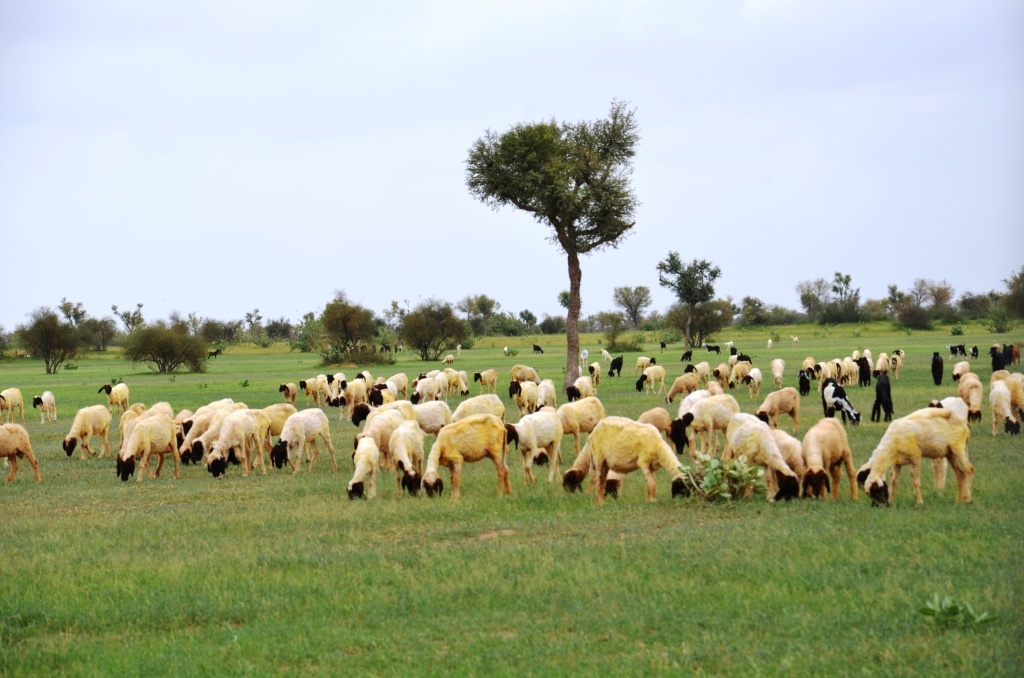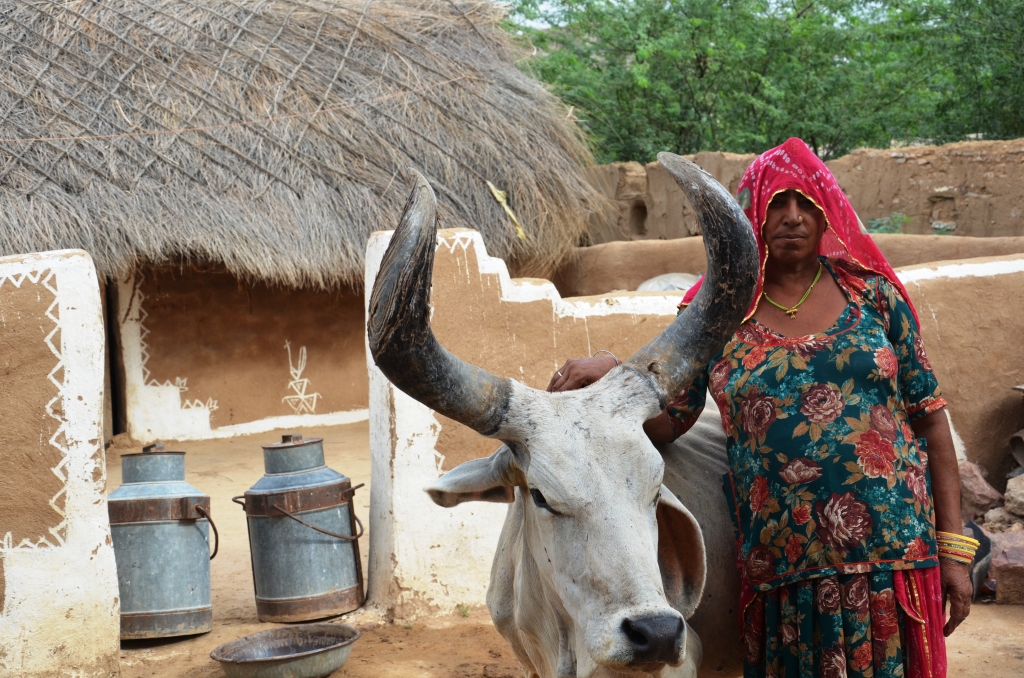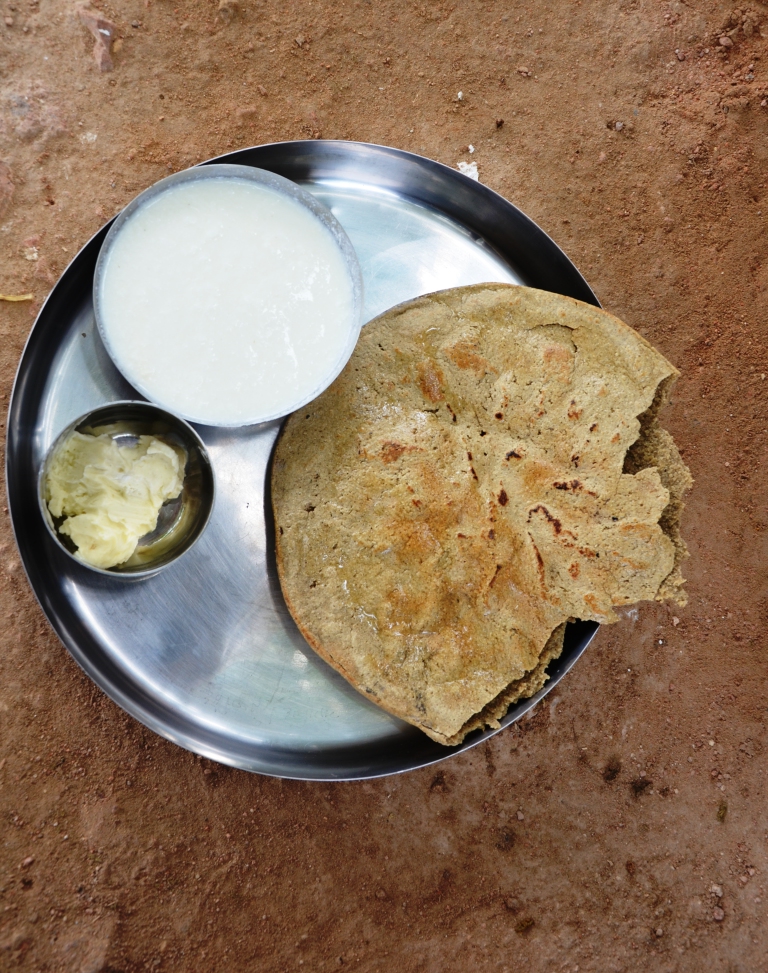
Deserts are usually cast as bad or inhospitable, something to combat, as the United Nations Convention on Combating Desertification (UNCCD) tries to do. People living in deserts are thought to be poor and in need of help from outside. But I think that paradigm is in urgent need of revision. Deserts may experience seasonal material scarcity, but they are also very rich, and not only spritually. Desert dwellers are immensely resourceful and their hospitality is impeccable. They also feed the world’s cities with dairy products and meat. In our Ark of Biodiversity project we have started to accumulate evidence that the nutritional quality of these products is much much better than those produced in industrial systems.
Hanwant Singh, the director of Lokhit Pashu-Palak Sansthan (LPPS), an NGO working with and supporting Rajasthan’s pastoralist communities, and I are currently experiencing this in Rajasthan’s Thar Desert where we are trying to tie up some of the loose ends of the Jaisalmer Camel Breeders’ Biocultural Protocol. We got way-laid because of heavy rains and stopped overnight at the place of a good friend who also happens to be the president of the Jaislamer Camel Breeder’ Association. We slept outside on cots under the pipal tree. In the morning we were awakened by the clatter of milking pails – the seven or so cows of the family that had assembled right next to us were being milked by our host’s wife and son. It was a gentle scene – the cows letting themselves be hand milked without any restraint, although the calves were present to induce the milk flow. After several buckets had been filled, the cows went for grazing on their own. Only one very old cow, said to be more than 20 years old, stayed behind.

This must be one of the most humane and mutually beneficial livestock systems that exists. The cows are habituated to harvest the local desert grasses on their own and willingly share their milk with their keepers. They require hardly any inputs, except a friendly pat and some encouraging words now and then. This production systems runs without medicines, fertilizers, and fossil fuels – not even a shed is required for this system.
Cattle has actually aways been the backbone of human subsistence in this desert, kept by members of all casts and communities. Sheep and goat were rare earlier, as most people were vegetarians. And camel ownership was restricted to the Maharajah and a few wealthy landlords. So cows provided food, manure and draught power.
Our friend, who is in his late fifties, told us in some detail how scarce water had been during his childhood and that guests had not been offered water, but buttermilk, because the latter was more abundant and easier to obtain. He also described how people had lived mostly of buttermilk and ghee and fruits from desert trees. Even bajra – pearl millet – was a rarity.
This traditional food – all natural, home made, and organic – is delicious, as well as healthy. Below is a picture of my breakfast – which kept me going throughout the day.


 Follow
Follow
Seeds,vegetations, plants, animals, humans in desert has the inherent capability and potentiality to give their maximum with minimum inputs-the fullest and maximum use of their capability. I describe each living system of desert as a FLUTE, which seems empty from outside but filled with potential MUSIC!